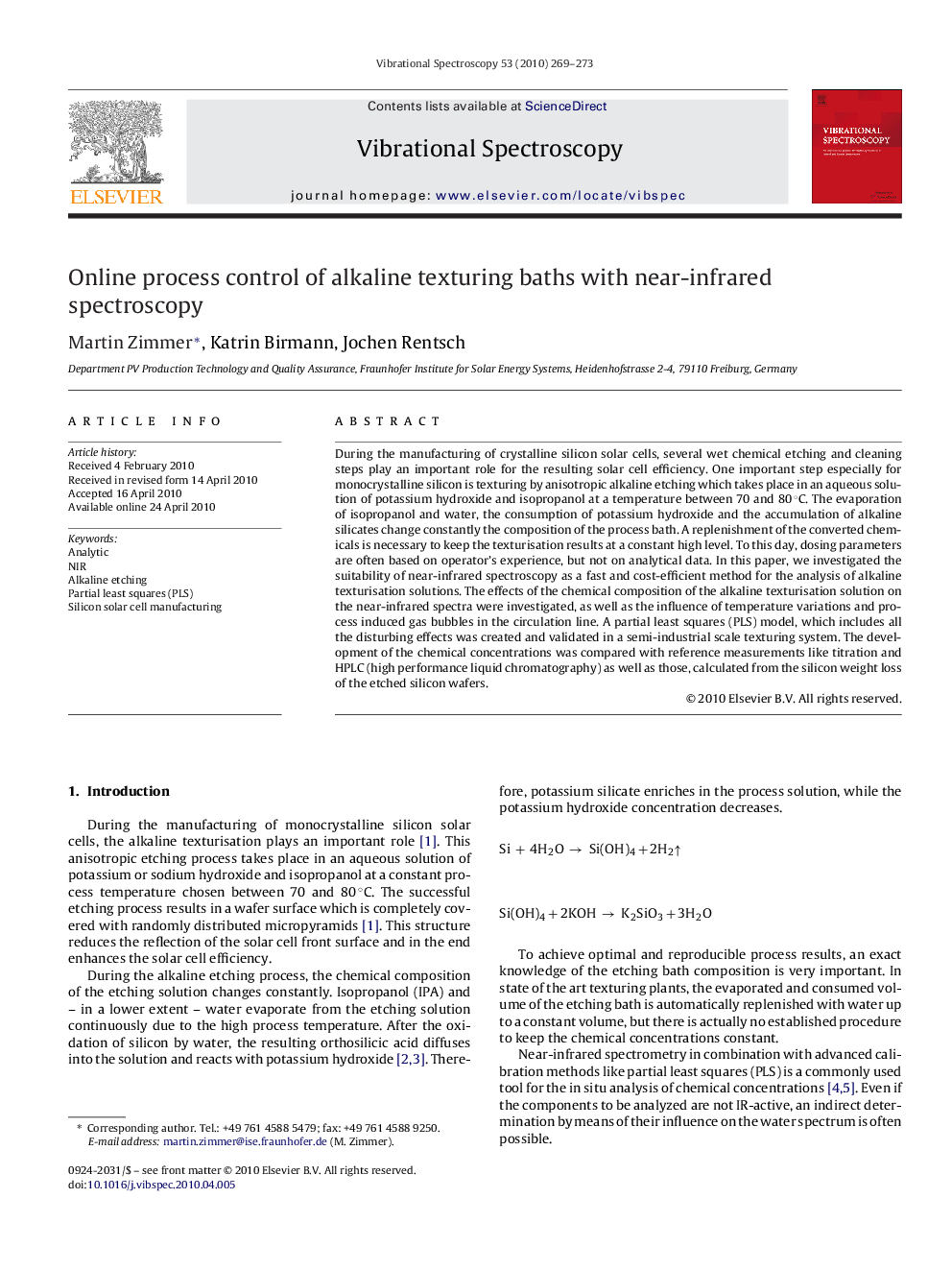| Article ID | Journal | Published Year | Pages | File Type |
|---|---|---|---|---|
| 1249677 | Vibrational Spectroscopy | 2010 | 5 Pages |
During the manufacturing of crystalline silicon solar cells, several wet chemical etching and cleaning steps play an important role for the resulting solar cell efficiency. One important step especially for monocrystalline silicon is texturing by anisotropic alkaline etching which takes place in an aqueous solution of potassium hydroxide and isopropanol at a temperature between 70 and 80 °C. The evaporation of isopropanol and water, the consumption of potassium hydroxide and the accumulation of alkaline silicates change constantly the composition of the process bath. A replenishment of the converted chemicals is necessary to keep the texturisation results at a constant high level. To this day, dosing parameters are often based on operator's experience, but not on analytical data. In this paper, we investigated the suitability of near-infrared spectroscopy as a fast and cost-efficient method for the analysis of alkaline texturisation solutions. The effects of the chemical composition of the alkaline texturisation solution on the near-infrared spectra were investigated, as well as the influence of temperature variations and process induced gas bubbles in the circulation line. A partial least squares (PLS) model, which includes all the disturbing effects was created and validated in a semi-industrial scale texturing system. The development of the chemical concentrations was compared with reference measurements like titration and HPLC (high performance liquid chromatography) as well as those, calculated from the silicon weight loss of the etched silicon wafers.
